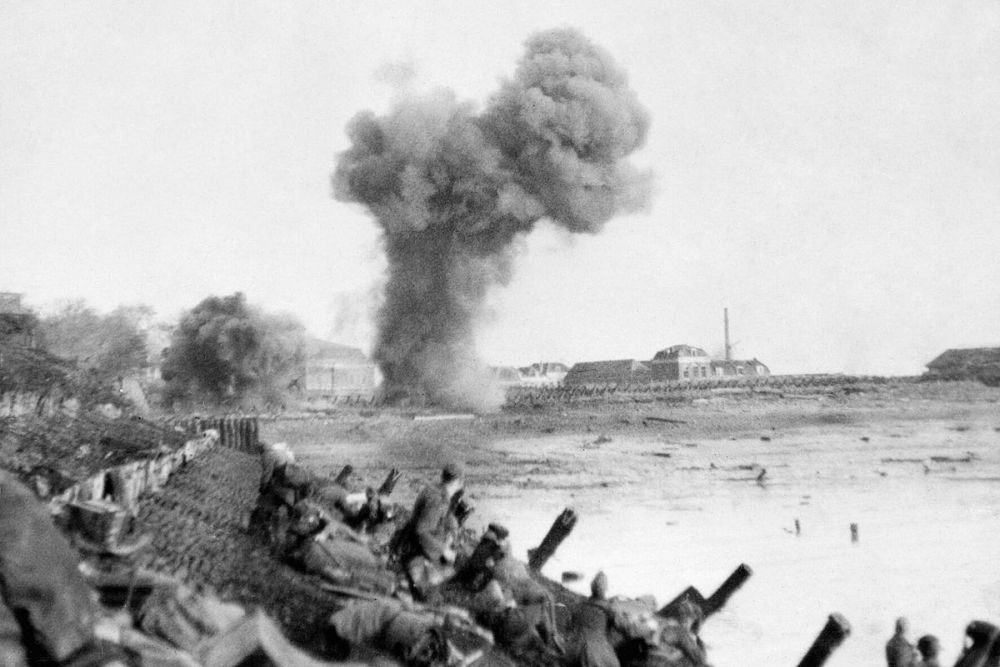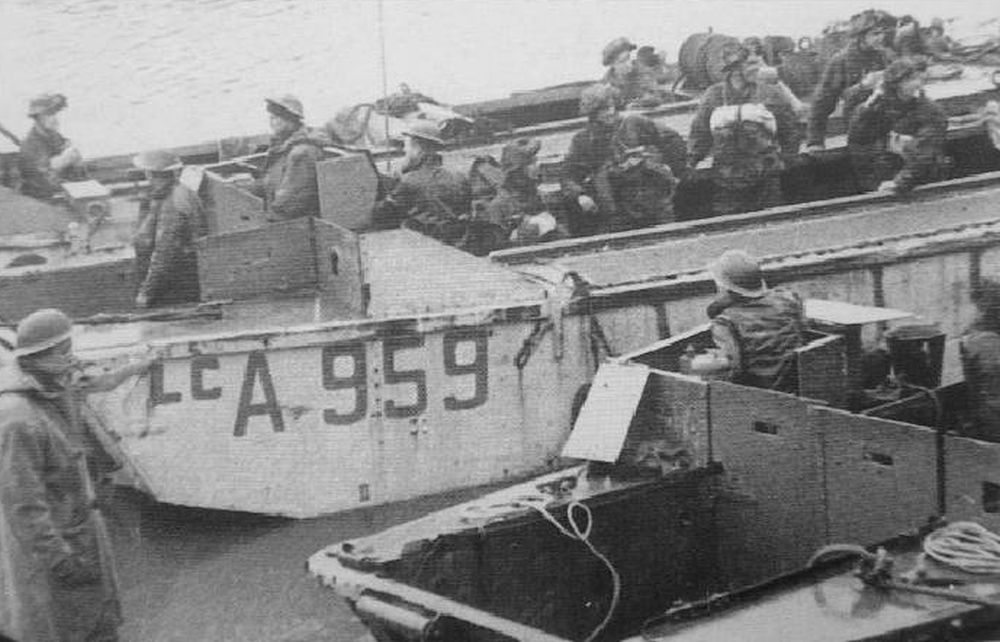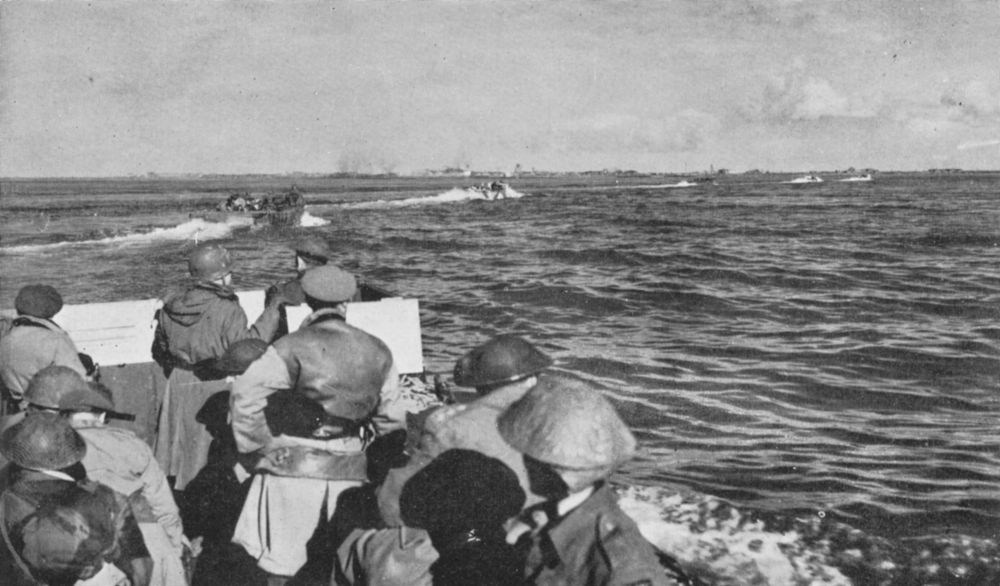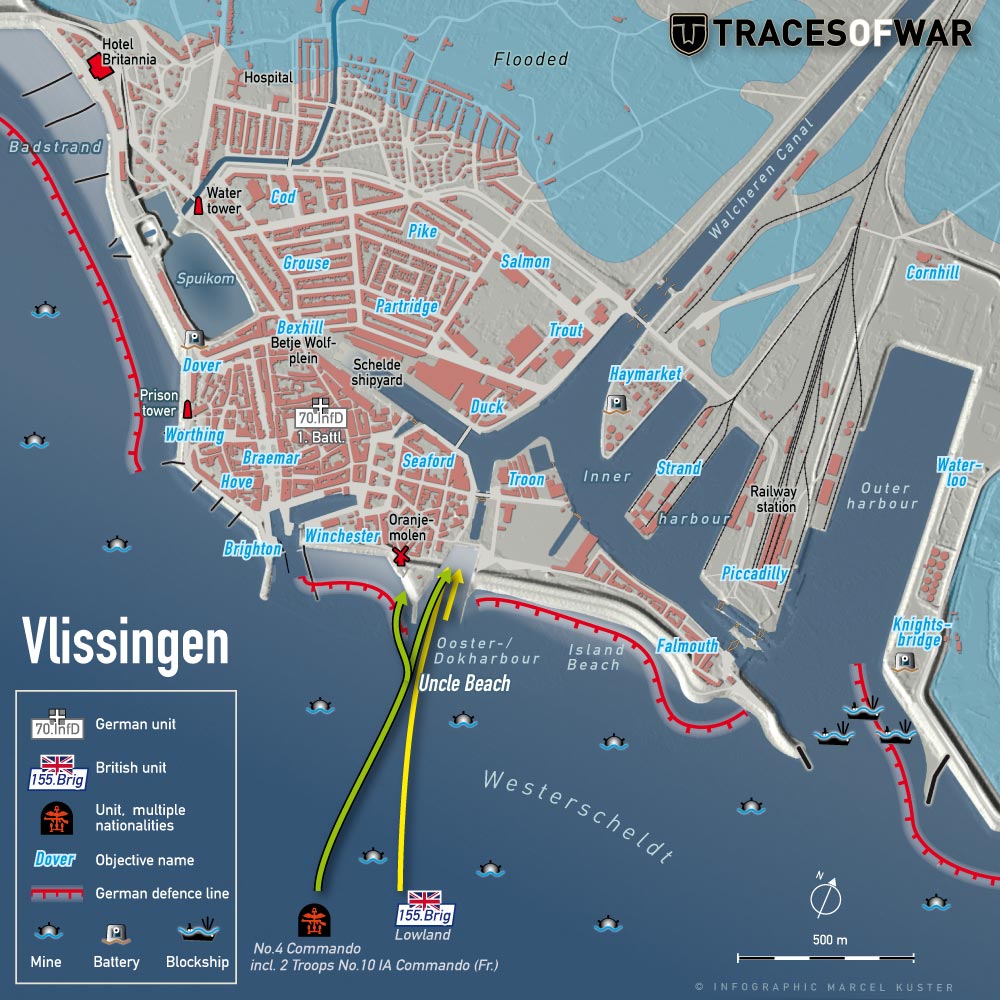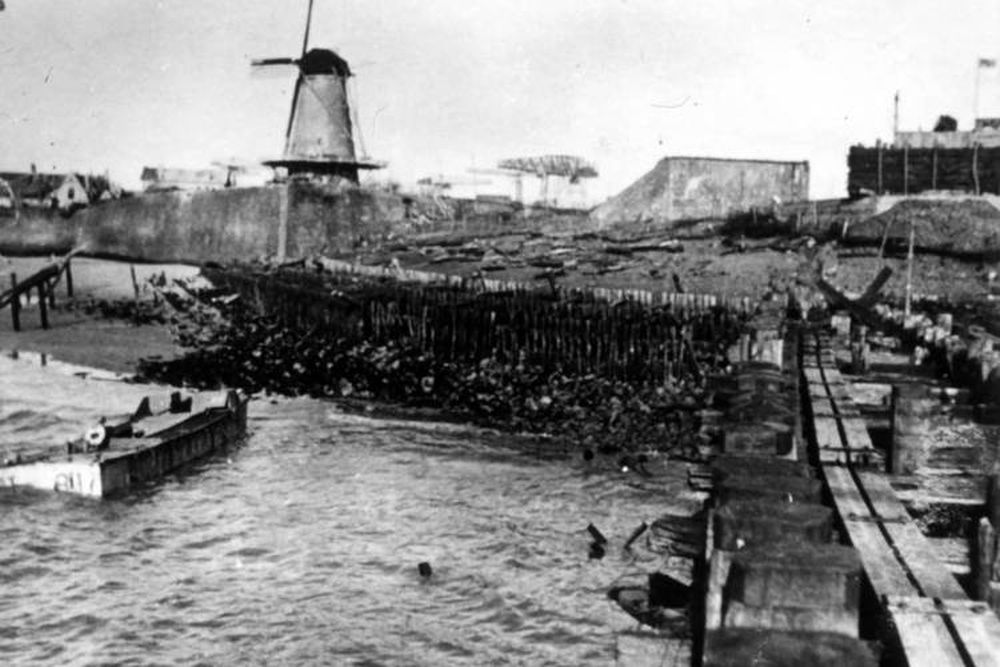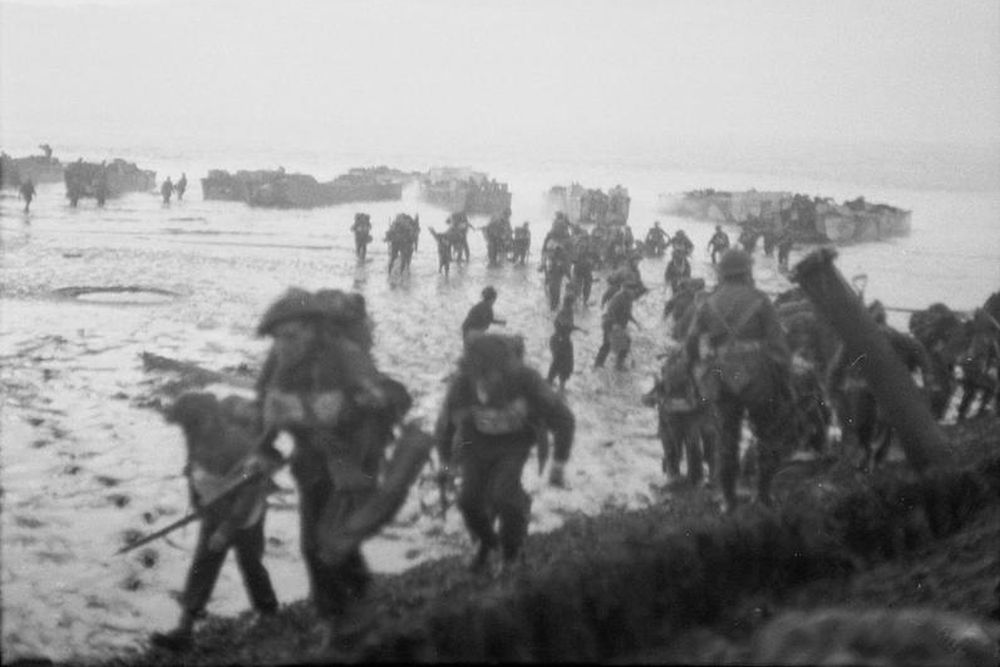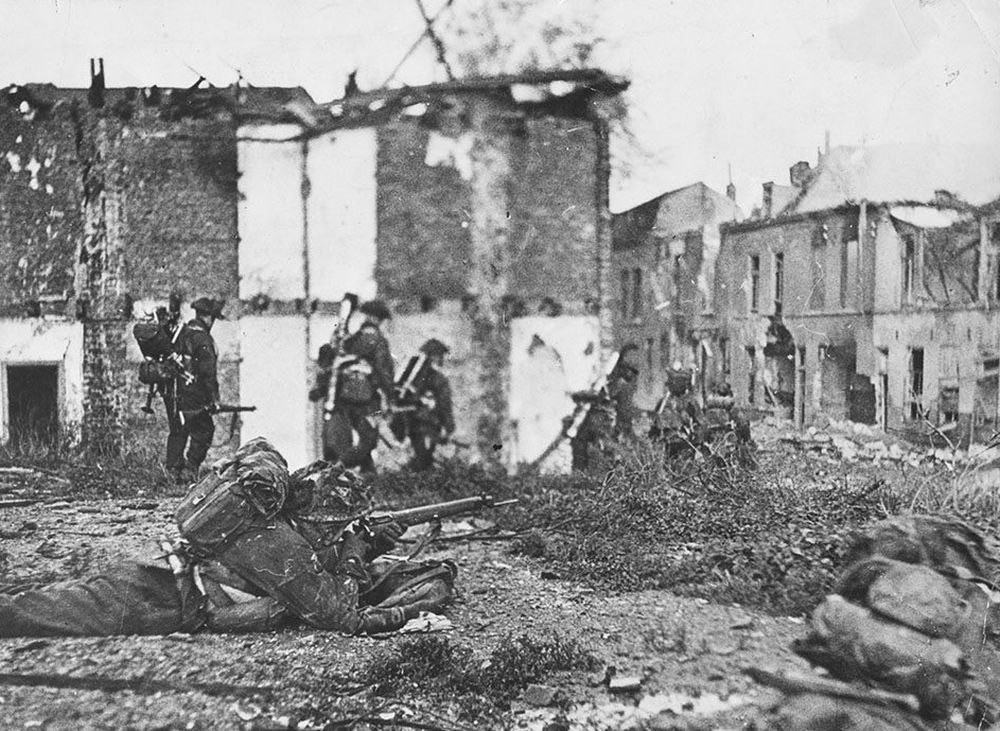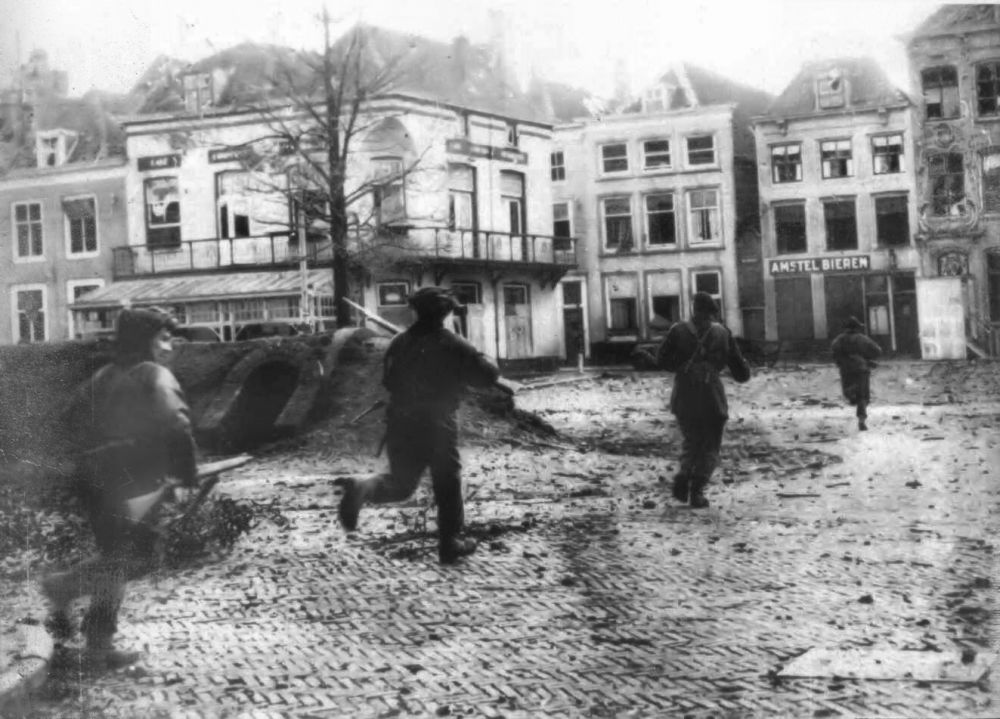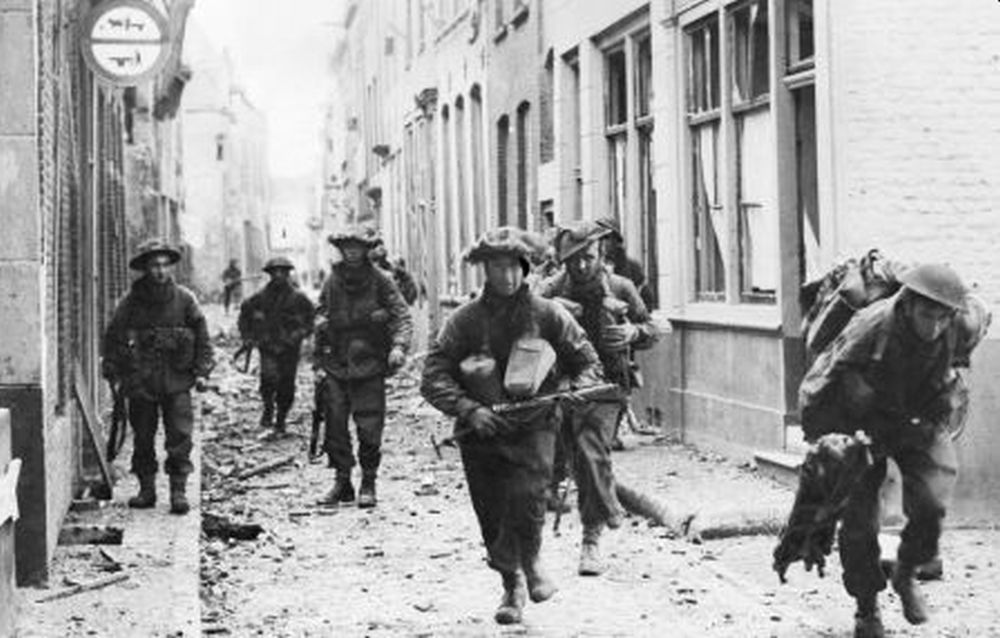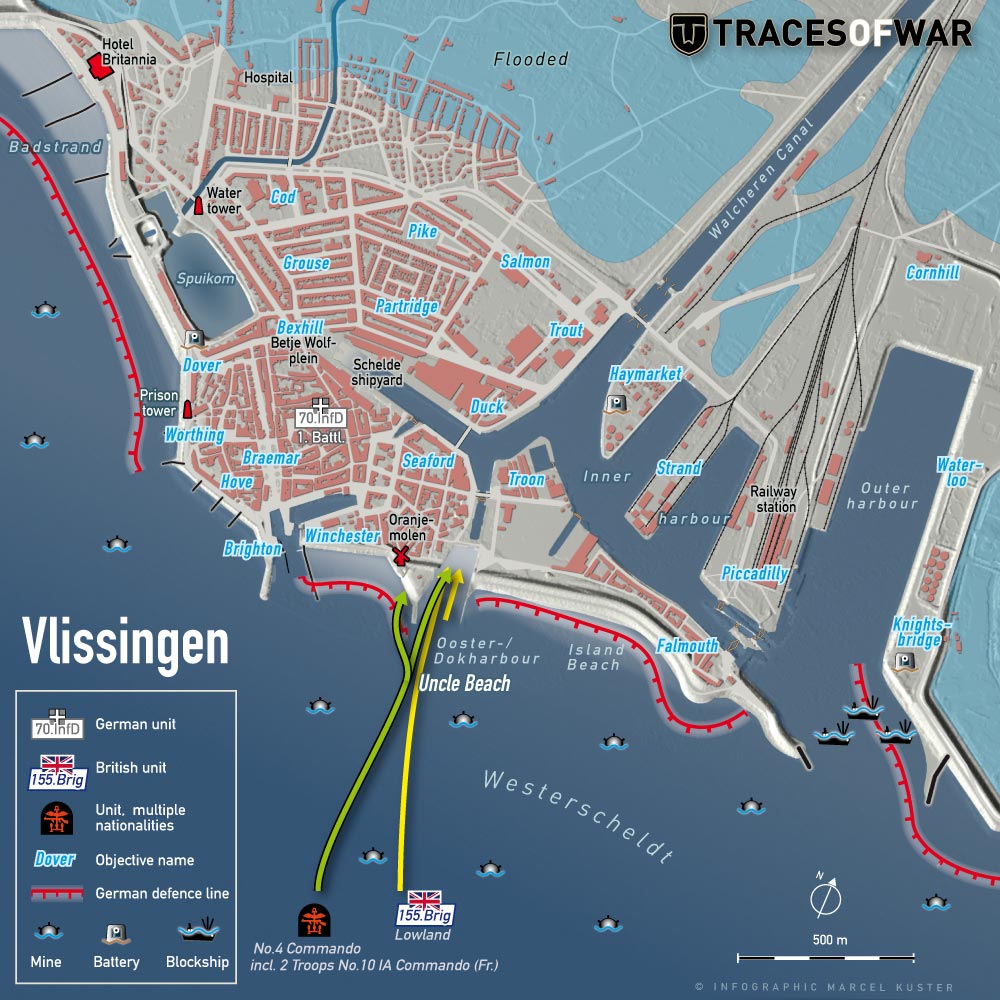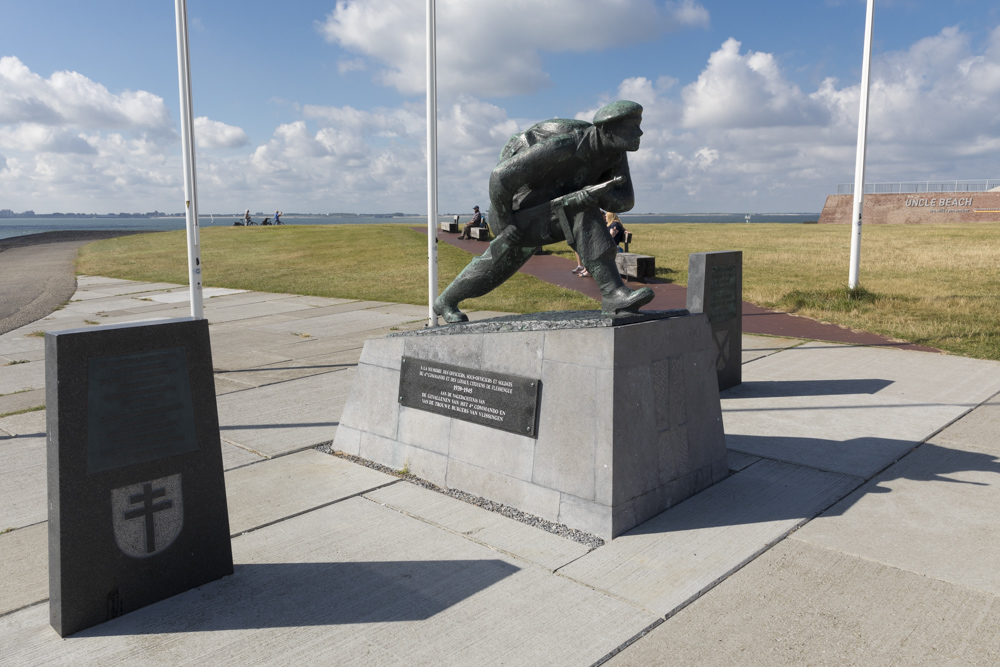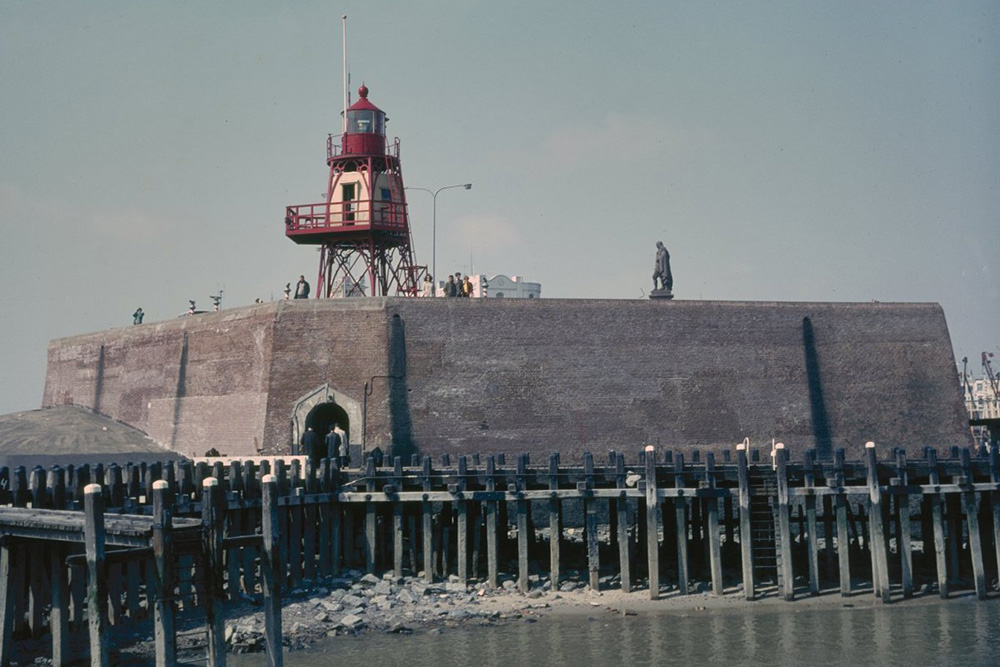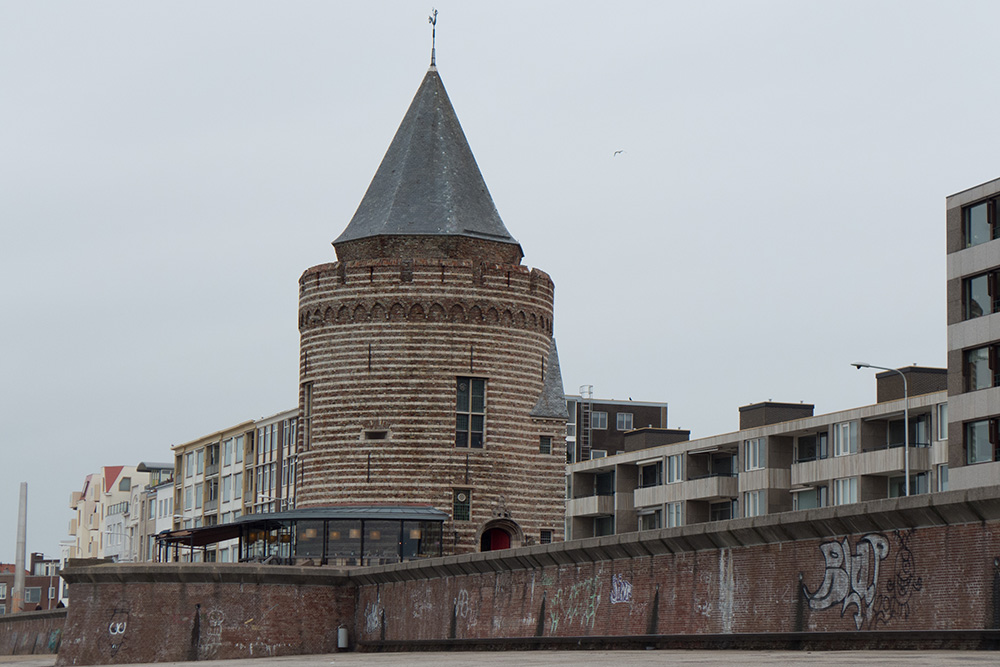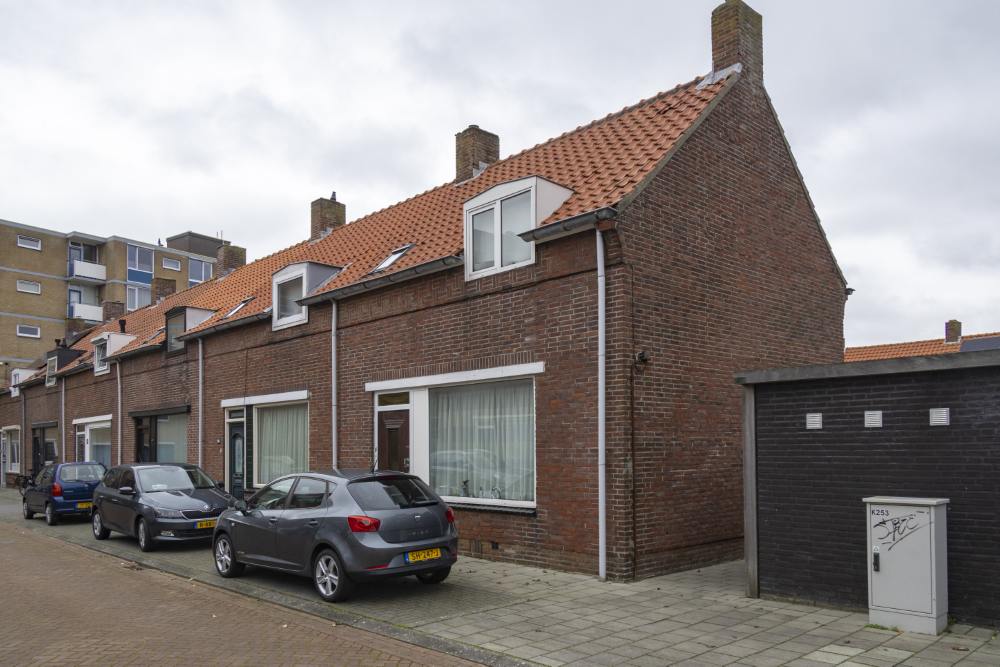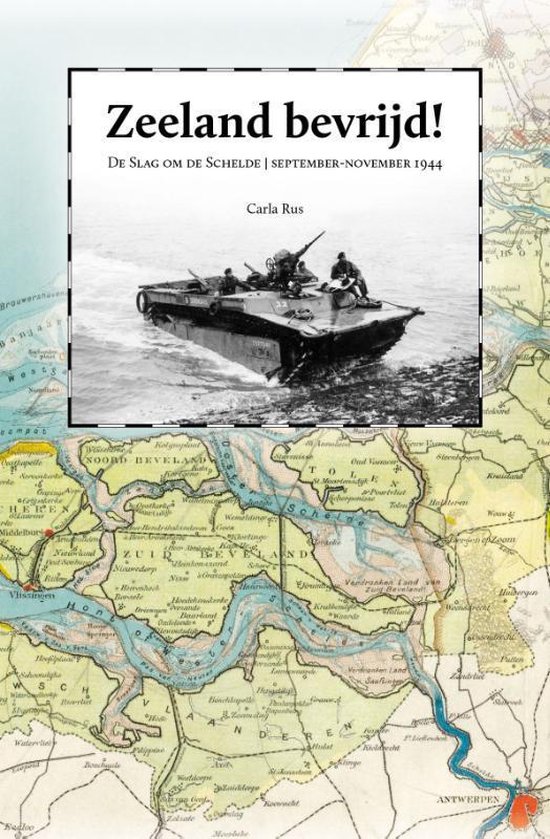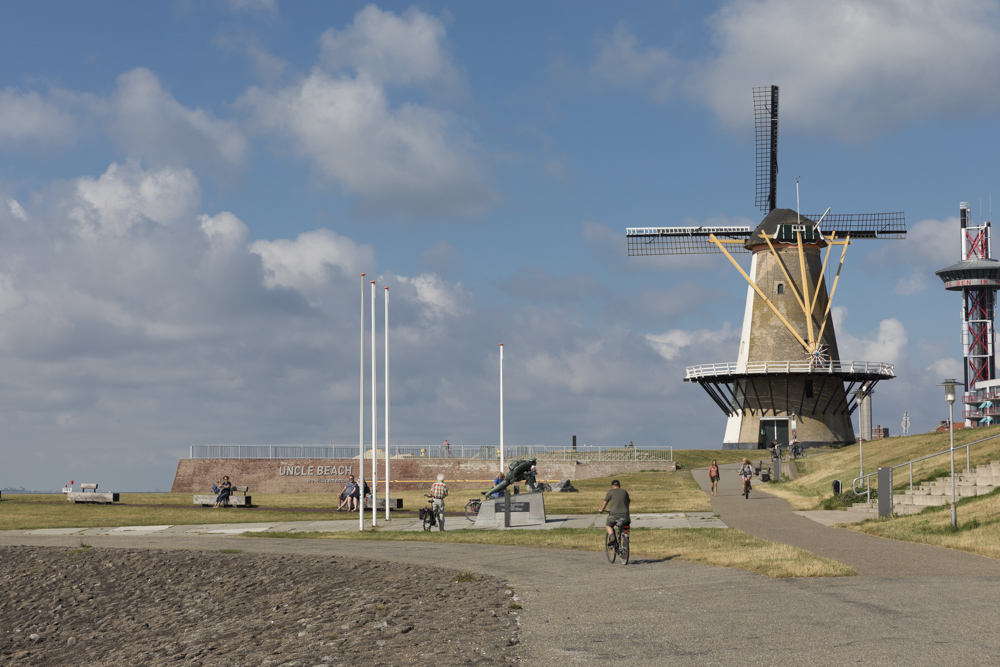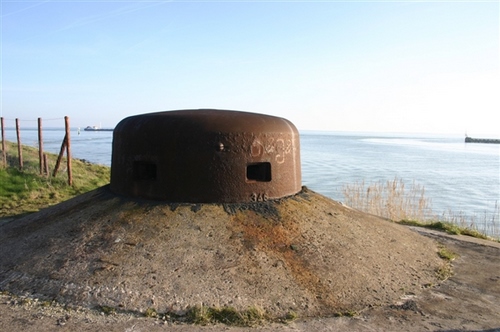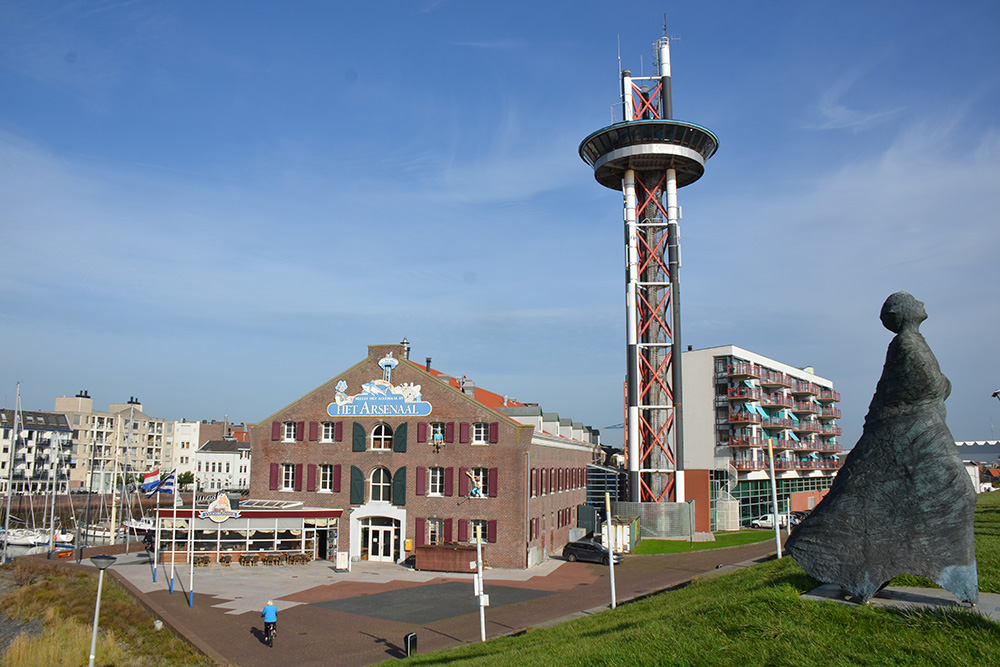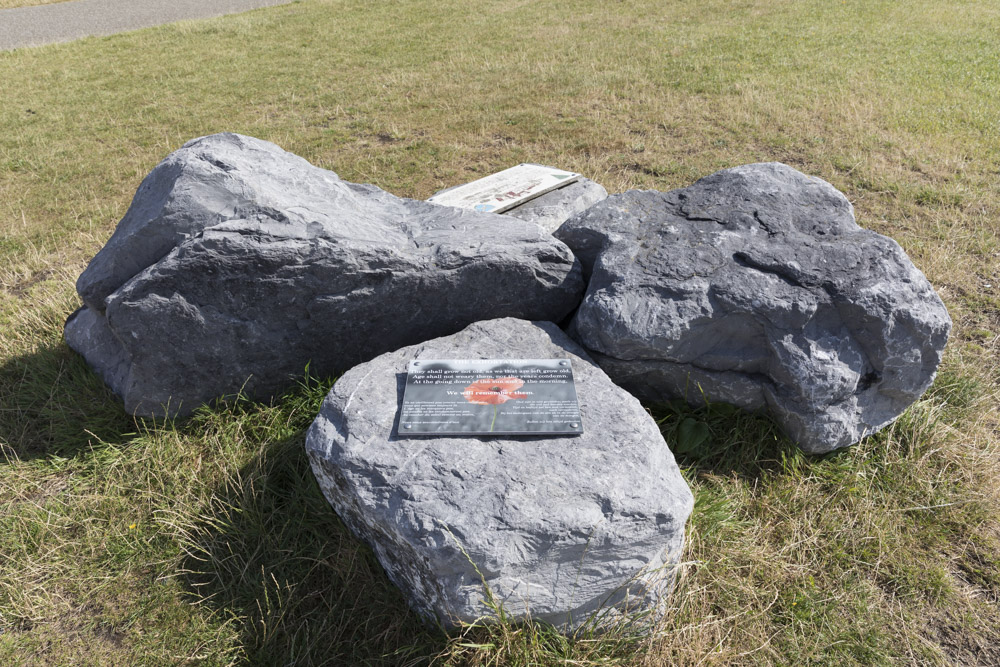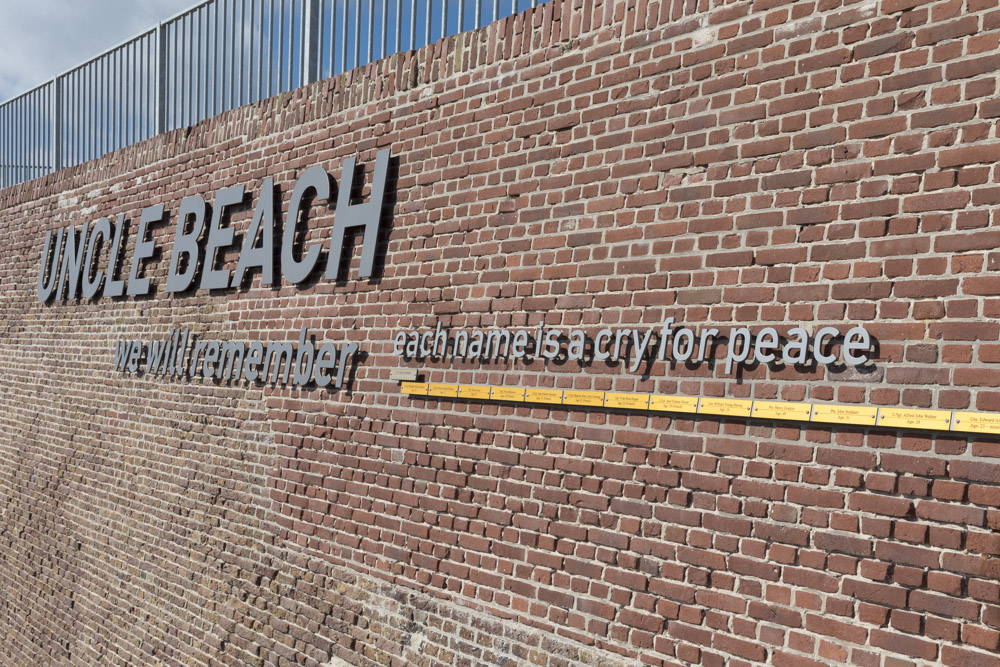Introduction
Operation Infatuate I was the designation for the amphibious landings near Flushing on November 1, 1944. That day, No. 4 Commando and the 115th Infantry Brigade beached near Flushing to make their contribution to Operation Infatuate.
Definitielijst
- Brigade
- Consisted mostly of two or more regiments. Could operate independently or as part of a division. Sometimes they were part of a corps instead of a division. In theory a brigade consisted of 5,000 to 7,000 men.
- Infantry
- Foot soldiers of a given army.
Preparations
On October 20, 1944[1], the Allies had captured the port of Breskens in western Zeeuws Vlaanderen. In the following weeks, the port would be the assembly area for a fleet of small landing craft for the benefit of the landings near Flushing, Operation Infatuate I. For this operation, a site had to be found and three options were considered: the Badstrand, the Easter or Dokhaven or the Eilandstrand.[2] Badstrand was the most ideal location as to its nature. A broad and flat beach with sufficient exits; however, it was located near one of the strongest fortifications in the area: the Brittania hotel and within range of some gun positions on the boulevard. In addition, the area behind the beach had been inundated by bombing the dykes and so the troops had to take a narrow fortified road in only one direction. Through this island beach the troops ended up far away from the center of town, they could get stuck between the Westerschelde and the port of Flushing and this road could easily be blocked by the Germans. This actually only left the Ooster- or Dokhaven. This small port, a remnant of a former harbor entrance, was heavily choked up with sand and was protected by two breakwaters, running far inland with a walkway on one of them. Troops could quickly advance into town from this port and there was sufficient space for the troops to assemble once the area had been captured. Hence, Dokhaven was selected.
The operational orders for Operation Infatuate I, as the landing near Flushing was called, were issued on October 26, 1944. The attack was to be launched on November 1 at 05:45.[3] Captain A.F. Pugsley[4] would be in overall charge of the Navy component with Captain C. Maud[5] his deputy. The landing troops would be commanded by the commander of the 115th Infantry Brigade[6], Brigadier James F.S. McLaren.[7] The fleet of landing craft, commanded by Lieutenant-Commander Stuart Vernon,[8] would have to make the crossing in six stages: an assault group consisting of three waves, followed by an assault group in two waves. A third, supporting group would ferry the brigade reserve across in four waves. Thereafter, three groups of only one wave would take additional troops across for build-up and support. All troops would have to be ashore at 08:35. The troops tasked with the liberation of Flushing would be made up of the 155th Infantry Brigade but would be preceded by an attack by No. 4 Commando, reinforced by two French troops of No. 10 (Inter-Allied) Commando.[9] No. 4 Commando would be closely followed by 4th Battalion King's Own Scottish Borderers with 5th Battalion KOSB and 7/9 Battalion Royal Scots.
Initially, an aerial bombardment was planned but this was withdrawn on October 27 because of the serious risk of civilian victims.[10]
Definitielijst
- Brigade
- Consisted mostly of two or more regiments. Could operate independently or as part of a division. Sometimes they were part of a corps instead of a division. In theory a brigade consisted of 5,000 to 7,000 men.
- Infantry
- Foot soldiers of a given army.
Defense
In and around Flushing, two battalions of the German Grenadier-Regiment 1019 were located,[11] commanded by Oberst Eugen Reinhardt. I. Battalion was tasked with the defense of the fortress[12], in other words Verteidigungsbereich Vlissingen. II. Battalion was deployed in the southeastern corner of Walcheren between Fort Rammekes and the Sloedam[13].
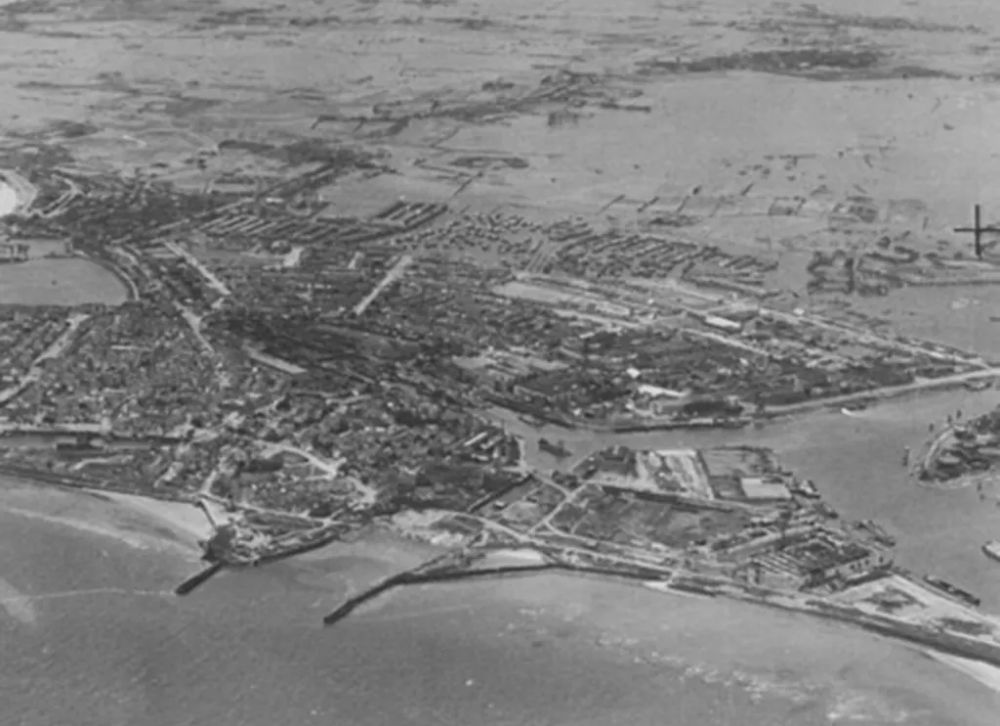
Aerial photograph of Flushing; in the center Dokhaven (Uncle Beach), left the Spuikom and on top the inundated area. Source: Royal Air Force photo
Marine-Artillerie-Abteilung 202, commanded by Seekommandant Kapitän-zur-SeeFrank Aschmann was in charge of the various coastal gun positions which could also be used for supporting fire around Flushing.[14] There were also some Flak positions in the area, manned by Marine-Flak-Abteilung 810 commanded by Korvettenkapitän Hans Köll.[15]
Definitielijst
- Abteilung
- Usually part of a Regiment and consisting of several companies. The smallest unit that could operate independently and maintain itself. In theory an Abteilung comprised 500-1,000 men.
- Flak
- Flieger-/Flugabwehrkanone. German anti-aircraft guns.
- Regiment
- Part of a division. A division divided into a number of regiments. In the army traditionally the name of the major organised unit of one type of weapon.
The fleet is under way
At 04:45[16] the fleet set sail from the port of Breskens. At the same time, an artillery barrage was opened by 284 guns[17] on the German positions in and around Flushing from Breskens. The entire sea front around the town came under fire.
The first assault wave consisted of two LCPs and one LCA carrying the Tarbrush Team and half a Troop of No. 4 Commando[18] to protect them. They should be at the far side at 05:45. This group was to mark a safe passage across the beach of Slijkhaven. They were followed closely by a second wave of five LCAs carrying Headquarters troops of No. 4 Commando, 1.5 troops of No. 4 Commando and a RN beach party[19].They were to secure the landing site and the immediate surroundings for the other troops.
The main landing was scheduled for 06:35.[20] Eight LCAs[21] followed the first wave and carried the remaining men of No. 4 Commando.
As soon as the landing in Flushing was under way, the 26 LCAs in Breskens[22] were to depart, carrying 4th Battalion KOSB which was to beach as soon as the area and the hinterland had been captured. Thirty minutes later, 7th Battalion Manchester Regiment[23] had to be ferried across with their machineguns and mortars as well as the Royal Engineers and 452nd Mountain Battery[24].
Definitielijst
- Regiment
- Part of a division. A division divided into a number of regiments. In the army traditionally the name of the major organised unit of one type of weapon.
Landings
The first unit to go ashore was Keepforce (Tarbrush Team) commanded by Lieutenant Harry Hargreaves[25] They went ashore to secure the landing area and mark it for the main body. Keepforce was accompanied by a section of No. 1 Troop of No. 4 Commando[26], commanded by Captain Dennis Rewcastle[27] and a section of No. 2 Troop commanded by Lieutenant John Hunter-Grey[28]. They marked the passage through the barbed wire with a white ribbon. This Recce Party (Keepforce) was ferried across in two LCPs[29] and was accompanied by an LCA[30] carrying the 1st Assault Troops (No. 1 Troop, No. 4 Commando) and a RN beach party[31]. At the moment the first vessel neared the beach, the artillery barrage was shifted to the flanks of the landing area.
Due to a navigation error, the two LCPs carrying the Tarbrush team of Keepforce ended up outside the landing area. Initially, they were held up by pole barriers but they did manage to come ashore with a little delay[32]. One of the two vessels ended up right outside the landing area at the head right below Oranjemolen where the men debarked. The vessel carrying the section of No. 1 Troop, No. 4 Commando had seen the wrong landing of Keepforce and beached west of Dokhaven, as Uncle Beach was called formally[33], as close as possible to Keepforce. These first commandoes and Keepforce beached against little opposition where the men of No. 1 Troop made their way through the barbed wire on the west[34]. A team commanded by CSM Lewis barged into a position and encountered some 20 Germans. This was the crew of a 75mm piece nearby[35]. The section of No. 2 Troop advanced along the east side of the landing area. Sergeant Stanley Mullard led his men into a bunker where they took 20 surprised Germans prisoner and captured their 50mm anti-tank gun[36]. The following landing wave was then directed to the beach as well.
Within 5 to 10 minutes, the second wave of five LCAs arrived with the 2nd Wave Assault Troops (No. 4 Commando), a Naval beach party, an LCOCU party and three men of the Royal Navy Signals[37]. As soon as the craft rounded the breakwater, the enemy opened fire. From a position near the Arsenaal Barakken, a 20mm piece[38] opened fire on the landing troops. This was followed up by defensive fire from various positions along the area and a 5cm anti-tank gun. The commandoes captured this piece immediately and deployed it themselves to support the advance[39]. The commander Lieutenant-colonel Dawson, who had come ashore with this group, established his HQ in Oranjemolen and radioed the rest of his HQ to come too.
At 40 minutes after H-hour, towards 06:30[40], the rest of the assault troops landed: the third wave with four Royal Navy Signals in six LCAs altogether. Five minutes later, the fourth wave of assault troops followed in five LCAs[41]. At that moment the German defense was in full action and the landing craft got the short end of the stick. As the sheltered landing site was solidly in Allied hands, disembarkation itself proceeded rather unimpeded. Still five minutes later, the last assault wave arrived in three LCAs, carrying Navy and Army men for Maintenance Stores[42]. Around this time, the defense was on full alert, firing at the attacking commandoes with everything it had. Although various LCAs were hit, only one was lost because it strayed outside the landing area, hit an obstacle and sprung a leak[43]. The men of 5 Troop aboard the vessel managed to reach shore[44].
In four waves of five LCAs each, from H+100 on, the Brigade Reserve came ashore in five minute intervals. They were followed by three waves of five LCAs each carrying Royal Engineers, pioneer boats, bulldozers, mortars, mountain artillery (452nd Mountain Battery) and such[45]. The tactic that was to be applied had the commandoes advance as speedily as possible to take up as many strategic positions in Flushing as possible. The men of the 115th Infantry Brigade, trailing the commandoes, would see to the clearing of German resistance points that had been left behind[46].
The 4th Battalion King's Own Scottish Borderers came ashore at Uncle Beach a little before 08:00[47]. Although the beach and the surrounding area were solidly in Allied hands, around that time the site came under enemy mortar fire, claiming at least one LCA which went down with all hands. C Company, commanded by Captain David Colville beached without too much problems as did B Company of Captain James Bennett. The guns of the unit could be set ashore as well. At that moment, heavier German artillery joined the barrage, probably from the coastal batteries near Domburg and Dishoek. Nonetheless, 4 KSOB managed to leave the landing site around 08:00 and advance into Flushing[48].
Definitielijst
- artillery
- Collective term for weaponry that fires projectiles. The modern term artillery mainly designates guns in general from which the range and calibres are outside certain boundaries. Artillery is also the name of the army unit which mainly operates such guns.
- Brigade
- Consisted mostly of two or more regiments. Could operate independently or as part of a division. Sometimes they were part of a corps instead of a division. In theory a brigade consisted of 5,000 to 7,000 men.
- Infantry
- Foot soldiers of a given army.
- mortar
- Canon that is able to fire its grenades, in a very curved trajectory at short range.
- resistance
- Resistance against the enemy. Often also with armed resources.
Landing site captured
The battle which subsequently unfolded in Flushing was characterized by confusion but generally proceeded in two stages. First the expansion of the bridgehead by No. 4 Commando[49] and next the consolidation of the captured area by 4 KSOB[50]. Various areas of operation of the different troops, sections etc., got mixed up and because of unexpected German resistance, plans had to be adapted accordingly from time to time.
After landing, No. 4 Commando switched its attention in various directions. No. 1 and No. 2 Troop each went its own way to clear the area along the coast: No. 1 Troop westwards towards the Vissershaven near the Arsenaal - code named Winchester -[51], No. 2 Troop went eastwards past the shipyard - code named Troon - in order to close off the isthmus up to the locks, code named Falmouth[52]. No. 3 Troop was to advance to Bellamy park - code named Braemar - , a little north of No. 1 Troop in order to capture the Navy barracks or Bomvrije Kazerne - code named Hove[53]. No. 4 Troop was to advance along Walstraat in the direction of Betje Wolfplein to capture the area there - code named Bexhill[54]. No. 5 Troop was to follow No. 3 in order to capture the area near the old Gevangentoren on the boulevard - code named Worthing[55]. No. 6 Troop was to follow No. 4 in order to assist in closing off Bexhill[56]
While the main body was coming ashore, No. 1 Section of No. 4 Troop. No. 4 Commando was clearing the dyke right next to the landing site. Subsequently, a position was taken at the beginning of Oranjestraat and No. 2 Section of No. 1 Troop advanced along this road towards the Arsenaal Barakken - code named Winchester[57]. They had occupied this position around 06:45 but it turned out to be empty and all opposition had left the area. Meanwhile, the 20mm gun that had been firing on the beach earlier, had been disabled and No. 2 Section joined No. 1 Section advancing along Oranjestraat. Lieutenant King left a small group behind to keep the Germans busy who at that moment had opened fire from the Keizersbolwerk - code named Seaford.
On the eastern side of the landing area, a 37mm gun was firing and No. 2 Troop, No. 4 Commando captured this position in a quick action, taking 25 Germans prisoner. The unit subsequently advanced on Piet Heinstraat, using the captured gun to give fire support. Around 09:00 the section of Lieutenant Frank Albrow took up defensive positions on the premises of shipyard De Schelde - code named Troon[58], on Piet Heinstraat. In doing so, they blocked any German possibility to advance along the isthmus in the direction of the locks[59].
With the landing area secured, this had to be expanded to enable 155th Infantry to advance into Flushing. No. 3 Troop commanded by Major Gordon Webb[60] had quickly advanced towards the center after having landed at 06:40[61], passing a tank barricade on Wilhelminastraat and advancing via Nieuwstraat on Bellamy park - code named Braemar -[62] which it reached by 07:00. They came under fire however from a position near the statue of Michiel de Ruyter on Keizersbolwerk, an historical fortress - code named Brighton. A bunker in this park was knocked out by No. 2 Section of Sergeant Jackson[63], claiming the life of Private Pierre Laux. During the clearing of the houses surrounding the park, Lieutenant Nicholas Barras was killed. The enemy remained active here and couldn't be driven off yet. Therefore No. 3 Troop had to leave a section behind near Beursstraat to keep this enemy busy. Hence, the section advancing in the direction of Hove (Weststraat and Pluimstraat) was obliged to leave men behind in strategic positions to prevent infiltration. No. 1 Section of Captain Murdoch McDougall took over the advance from No. 2 Section. Near Hove, the section encountered a strong defense which claimed 10 victims. Moving up through backyards and over roofs, they finally succeeded in reaching Hove. Meanwhile, the section had weakened to such an extent that the next objective, capturing the Bomvrije Kazerne, was impossible to achieve. It was therefore decided to take up defensive positions on Hove.
No. 4 Troop, known as the Heavy Weapons Troop[64], had been delayed because they first had to recover their mortars from their LCA, sunk by German fire. As soon as they were ready, they followed No. 2 Troop but they took Walstraat on their way to Betje Wolfplein - code named Bexhill[65] where they were subjected to fire from a German position on the boulevard - code named Dover.
Despite the heavy landing, Captain Alexander Lofi managed to assemble the men of No. 5 Troop. The sections led by Lieutenant Paul Chaussé and Pierre Amaury[66] followed the route of No. 3 Troop according to plan in order to attack the old Gevangentoren. No. 1 Section of Pierre Chaussé was subjected to counter fire from the Germans but managed to chase them off with mortar fire and moved up past Sint Jacobstoren and Oude Markt. No. 2 Troop advanced along Kerkstraat, across Bellamy park and Breestraat in order to attack the Bomvrije Kazerne. No. 1 Section was to attack the barracks themselves while No. 2 Section was to lend fire support from a defensive position on Groote Markt. When they arrived German defensive fire from the positions on Worthing made any advance impossible. Lt. Chaussé was injured and the men were forced to take up defensive positions awaiting reinforcement.[67].
Meanwhile, fire had been opened on the German positions at Keizersbolwerk - code named Brighton - with an anti-tank gun captured near Oranjemolen. Together with a section of No. 1 Troop that had been left behind in the Arsenaal and the section near Beursstraat, they managed to drive the Germans from Brighton. Next, No. 1 Troop advanced through Seaford looking for groups of Germans that had been left behind, Towards 10:00 they managed to join the Commando Reserve at the landing site.
While No. 3 Troop was busy on the left flank, No. 6 Troop on the right gained much ground. After the section commanded by Lieutenant Jacques Senée had captured the post office on the Steenen Beer while the other section, commanded by Lieutenant Nahuys, a former Flushing police officer, moved up fast through narrow streets and reached Bexhill[68] at 07:45, the area around the slipways of the shipyard near Betje Wolfplein[69]. The objective of No. 6 Troop, commanded by Captain Guy Vourch, was the area located between Spuikom and the shipyard. Here however, they were subjected by heavy defensive fire from Dover, a position at the corner of Coosje Buskenstraat and the boulevard. Lieutenant Nahuys' section managed to get across but Lt. Senée got stuck. It was therefore decided to take up a defensive position in order to prevent a possible German infiltration. The MG Section of No. 4 Commando was deployed here in defense. At 09:30 a company of 4th Battalion, King's Own Scottish Borderers arrived to strengthen the defense. Later that night, a second company of 4 KSOB would arrive at it was decided that 4 and 5 KSOB would resume the attack from here the next day.
So, No. 1 Troop had cleared the left flank of enemies around 10:00, No. 2 had established a strong defensive position on the right flank, Seaford had been secured and commandoes were advancing on Hove and Worthing. 4 KSOB had come ashore almost completely. The heaviest fighting was still going on around Brighton and Falmouth and on Boulevard de Ruyter where No. 5 Troop was advancing. this unit had reached Breestraat around 07:45 and had faced much resistance on entering Worthing. They received much counterfire from the Bomvrije Kazerne which remained solidly in German hands.
At 09:30, a company of KSOB took over the position of No. 5 Troop which advanced further in order to take over the Dover position. Initially, they were held up by a German position on Paardenmarkt but this was captured after a short fire fight. Next, No. 5 Troop attempted to muzzle the enemy on Dover. Here, a quadruple Flak gun and machinegun positions were located that held the commandoes and the KSOB at the other end of Coosje Buskenstraat at Betje Wolfplein in a tight grip. It was impossible however to approach the German positions. Consequently, No. 5 Troop took up defensive positions in Noordstraat where they contacted No. 3 Troop on Spuistraat and Coosje Buskenstraat.
Starting at 08:00 4th Batt. KSOB left the landing site and moved into town[70]. A Company passed through the positions of No. 2 Troop into Falmouth in order to clear the German positions up to the locks. B and C Company actually intended to pass through the positions of No. 4 Troop to enter the suburbs of Flushing but as mentioned earlier, they bogged down in Bexhill[71]. As Captain Bennett approached Bellamy park, he was seriously injured by a German sniper[72]. D Company advanced towards No. 5 Troop and took over its positions around Worthing, enabling this troop to advance on Dover. They had their work cut out for them as a quadruple 20mm gun and machinegun positions on Dover covered the entire front line up to Betje Wolfplein[73]. Around 11:00, the British got the upper hand though. Except for one gun, they managed to get all seven of the Mountain Battery ashore to deploy them against the German fortifications. With their defensive positions near Bexhill, the British could prevent the Germans from reinforcing and resupplying their positions downtown. The improved weather enabled Hawker Typhoon fighter bombers and Supermarine Spitfires to support the troops.
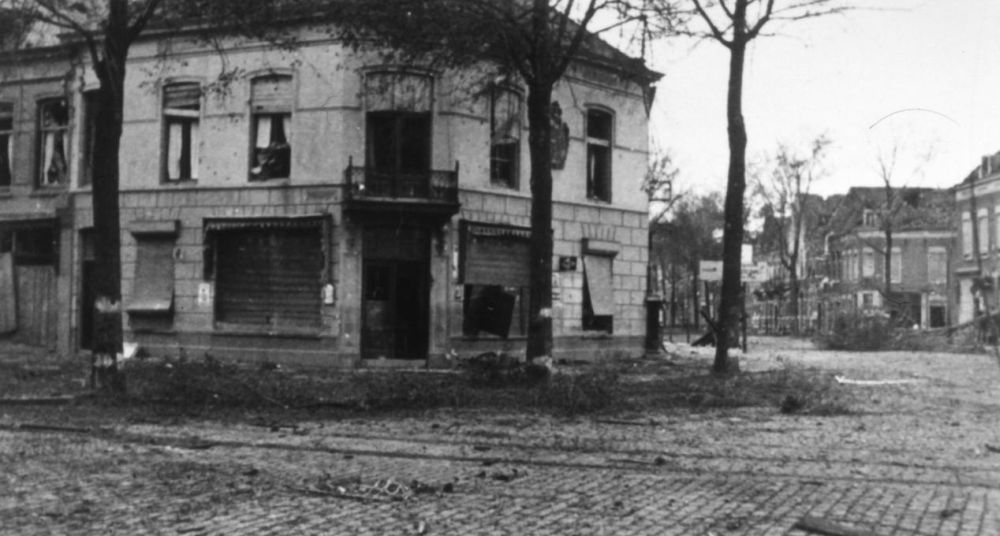
Betje Wolfplein (Bexhill), on the left Coosje Buskenstraat to Dover. Source: Public Domain (unknown)
In addition to all this, it should be mentioned that the commandoes and 155th Infantry Brigade were being escorted during all their actions by some 40 resistance fighters of OD Group Poppe from Flushing[74]. In the days before the landings, this group, by military resistance and sheer bluff, had prevented the Germans from blowing up the cranes and facilities on the shipyard De Schelde. During the battle in Flushing, this group provided guides to the Allies who proved to be of great importance in the numerous street and houe-to-house fights that took place.
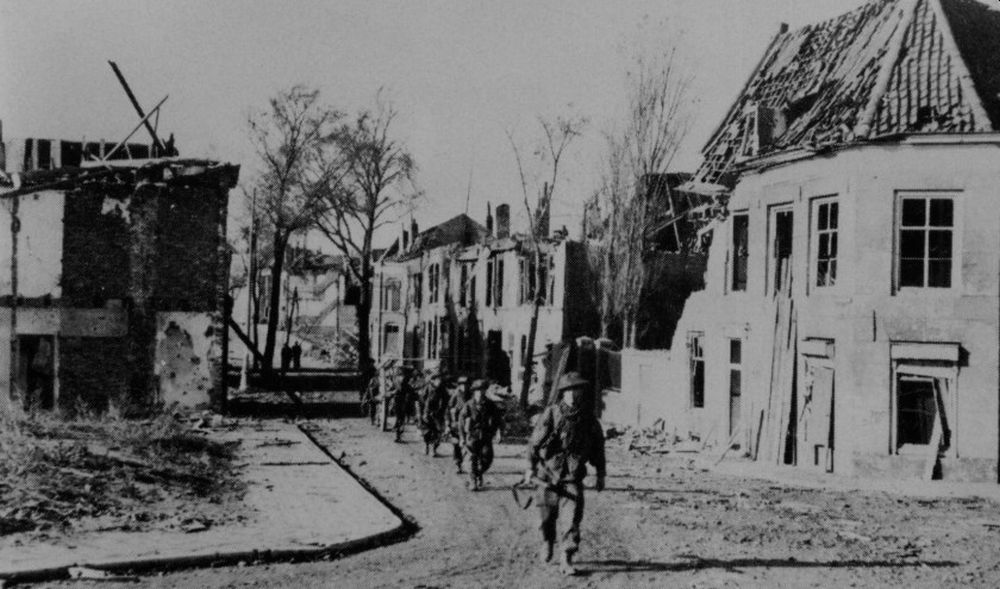
Commandos returning to their assembly area on the corner of Gravestraat and Paardenstraat. Source: Imperial War Museum
At 16:00, No. 1 Troop left the reserve in order to reinforce No. 3 Troop for the attack on Hove. This progressed so arduously however that by nightfall, little ground had been gained. Towards the night, all troops destined for Flushing had been put ashore. The landing site was solidly in Allied hands. On the right flank, the area up to the locks had been all but cleared of German opposition. The center of town was captured up to a line close to the Bomvrije Kazerne via Coosje Buskenstraat up to the shipyard. 5th Batt KSOB had come ashore in the course of the afternoon and could be deployed. The 7/9 Batt Royal Scots was coming ashore in the afternoon and evening. At 22:00 the commander of 155th Infantry, Brigadier McLaren arrived in town and could take over all command. Further advance during the night was considered near suicide and therefore it was decided that the next stage of the battle, the liberation of Flushing would begin the next day.
Notes
- Strijd om Walcheren/Wikipedia
- De landingsplaats/De Slag om Vlissingen
- Force T Operational Orders, 26. October 1944
- Force T Operational Orders, 26. October 1944
- Force T Operational Orders, 26. October 1944
- Force T Operational Orders, 26. October 1944
- Rawson, 2020, p 36
- Rawson, 2020, p 36
- Rawson, 2020, p 36
- Infatuate - de voorbereiding / Flushing
- Rawson, 2020, p 25
- Rawson, 2020, p 25
- Rawson, 2020, p 25
- Rawson, 2020, p 25
- Rawson, 2020, p 25
- Strijd om Walcheren/Wikipedia
- Brooks, 2011, p 31
- Brooks, 2011, p 31
- Brooks, 2011, p 31
- Strijd om Walcheren/Wikipedia
- Brooks, 2011, p 31
- Brooks, 2011, p 31
- Brooks, 2011, p 31
- Brooks, 2011, p 31
- Rawson, 2020, p. 45
- Wit lint landingsstrand/Flessinghe
- Rawson, 2020, p. 45
- Rawson, 2020, p. 45
- Force T Operational Orders, 26. October 1944
- Force T Operational Orders, 26. October 1944
- Force T Operational Orders, 26. October 1944
- Brooks, 2011, p 32
- Report on No. 4 Commando Operation Infatuate
- Brooks, 2011, p 32
- Rawson, 2020, p. 45
- Rawson, 2020, p. 45
- Force T Operational Orders, 26. October 1944
- Report on No. 4 Commando Operation Infatuate
- Brooks, 2011, p 32
- Report on No. 4 Commando Operation Infatuate
- Force T Operational Orders, 26. October 1944
- Force T Operational Orders, 26. October 1944
- Report on No. 4 Commando Operation Infatuate
- Rawson, 2020, p. 52
- Force T Operational Orders, 26. October 1944
- Brooks, 2011, p 32
- Rawson, 2020, p. 57
- Brooks, 2011, p 35
- Brooks, 2011, p 34
- Brooks, 2011, p 34
- Brooks, 2011, p 34
- Brooks, 2011, p 34
- Brooks, 2011, p 34
- Brooks, 2011, p 34
- Brooks, 2011, p 35
- Brooks, 2011, p 35
- Brooks, 2011, p 34
- Rawson, 2020, p. 45
- Brooks, 2011, p 34
- Rawson, 2020, p. 48
- Brooks, 2011, p 34
- Brooks, 2011, p 34
- Rawson, 2020, p. 48
- Brooks, 2011, p 34
- Brooks, 2011, p 34
- Rawson, 2020, p. 52
- Rawson, 2020, p. 54
- Rawson, 2020, p. 54
- Brooks, 2011, p 35
- Brooks, 2011, p 35
- Brooks, 2011, p 35
- Rawson, 2020, p. 57
- Brooks, 2011, p 35
- Rus, 2019, p 74
Definitielijst
- Brigade
- Consisted mostly of two or more regiments. Could operate independently or as part of a division. Sometimes they were part of a corps instead of a division. In theory a brigade consisted of 5,000 to 7,000 men.
- Flak
- Flieger-/Flugabwehrkanone. German anti-aircraft guns.
- Infantry
- Foot soldiers of a given army.
- infiltration
- Quiet incursion into enemy lines prior to an attack.
- mortar
- Canon that is able to fire its grenades, in a very curved trajectory at short range.
- resistance
- Resistance against the enemy. Often also with armed resources.
- sniper
- Military sniper who can eliminate individual targets at long distances (up to about 800 meters).
Information
- Article by:
- Wilco Vermeer
- Translated by:
- Arnold Palthe
- Published on:
- 19-06-2023
- Last edit on:
- 30-09-2024
- Feedback?
- Send it!
Related sights
Related books
Sources
- BROOKS, R., Walcheren 1944, Osprey Publishing Ltd., Botley, Great Britain, 2011.
- RAWSON, A., Walcheren, Pen and Sword, Havertown, 2020.
- RUS, C., Zeeland bevrijd!, Uitgeverij Het Paard van Troje, Goes, 2019.
- SWIERS, R.J., Strijd om Zeeland, Aspekt, Soesterberg, 2019.
- Strijd om Walcheren / Wikipedia
- Wit lint landingsstrand / Flessinghe
- Infatuate - de voorbereiding / Flessinghe
- De landingsplaats / De Slag om Vlissingen
- Force T Operational Orders, 26. October 1944
- Report on No. 4 Commando Operation Infatuate
